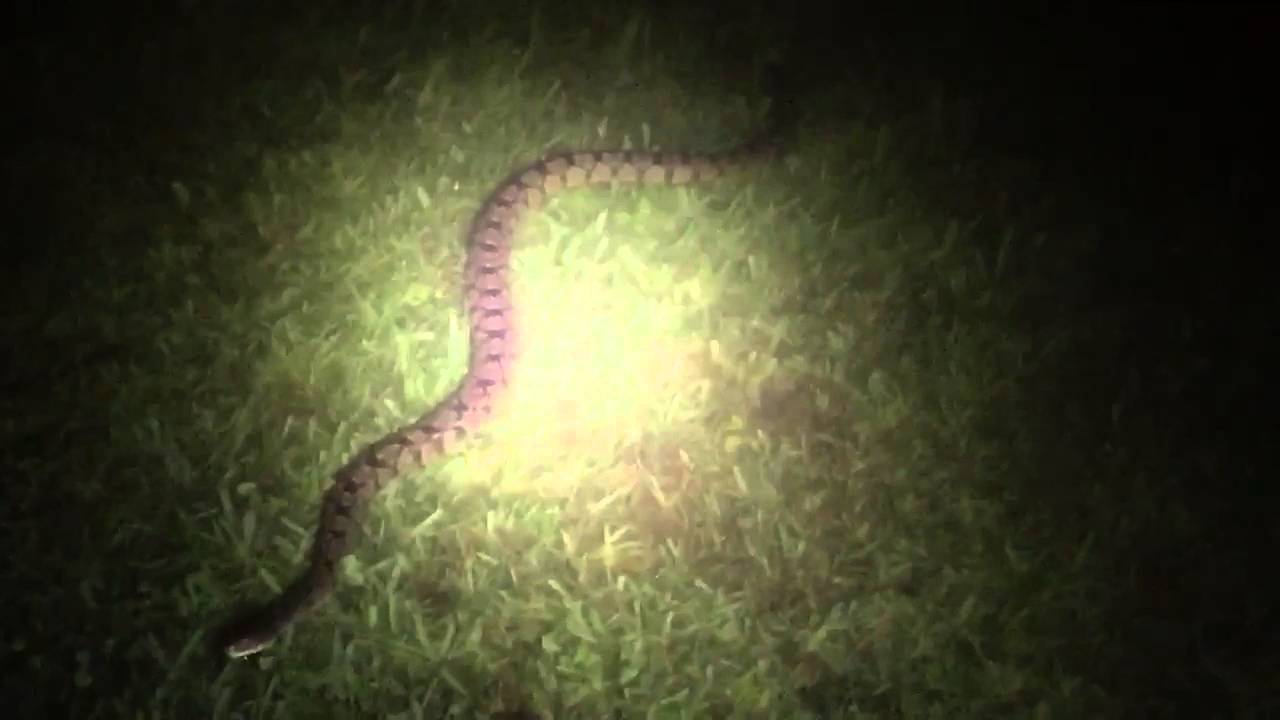Flood waters are rising across the nation right now, following massive rains in Texas. Remember these waters can dislodge snakes from their habitat. They can end up anywhere, sometimes clinging to the trees, under decks, in basements and in the case below under a restaurant.
The Texas Parks and Wildlife Department (TPWD) is advising residents to be mindful that snakes and other animals may seek cover in debris piles and to exercise caution when cleaning up after storms.
It’s headed East
Small streams, bayous and rivers will be on the rise into next week as the rounds of torrential rain expand along the Interstate 10 and 20 corridors from northeastern Texas to northern Florida and southern Georgia, AccuWeather meteorologists warn. This is in addition to the high risk of flash urban flooding which can put lives and property at risk and significantly hamper travel in the region.
Many streams and rivers have receded from their high water marks in recent days in northeastern Texas following deluges from April to early May. However, some of the rivers are still well above flood stage and the ground remains moist, so any additional rain could cause water levels to rise quickly. There almost always is a delayed response in river levels following heavy rainfall because it takes a while for runoff to reach progressively larger streams.
Animals will be scrambling to reach safe ground.
YIKES! This snake was found under a table at Sharky's Waterfront Grill in Kingwood. #houstonflood pic.twitter.com/woUoQGBdFp
— KPRC 2 Houston (@KPRC2) June 1, 2015
Garter snake trying to escape flood waters in Cochrane, Alberta! #abstorm pic.twitter.com/BN9EIkcTTM
— Braydon Morisseau (@BraydonMoreSo) June 14, 2022
If you are doing any flood clean up, WATCH OUT FOR SNAKES ?. Many wildlife have been displaced due to flood waters. I’m speaking with one woman who was bitten by a copperhead and landed in the hospital. Safety tips at 6 on @LEX18News pic.twitter.com/7wURGSxIiO
— Sydney Darden (@SYDNEYDREPORTS) July 31, 2022
But can you kill them? Many people may not be aware of this, the fact is that in many states it IS illegal to kill a snake. So you may want to think twice before you grab that shovel! Check here for states with rules.
Advice
Heavily damaged structures are particularly attractive to displaced animals because they offer a number of accessible entrances. Animals may also find shelter under debris, including debris piles created during the cleanup effort.
To keep snakes out, make sure to keep your home clean. Remove debris as soon as possible. Seal all holes or cracks that are a quarter-inch wide or larger. Check places such as corners of doors and around water pipes and electrical service entrances. Seal holes in masonry foundations with mortar and holes in wooden buildings with fine 1/8-inch mesh cloth or sheet metal. Watch out while you’re cleaning up, or poking around in holes – snakes could be lurking there.
Check the roof for overhanging vegetation. Snakes are good climbers and can also enter through the attic where trees or shrubs provide access. Have your house checked for rodent problems. If you can eliminate the food source, the snakes will go elsewhere.
If a snake is found in the house, identify the snake. Once it is known to be non-venomous, carefully place a bucket or wastebasket over the snake. Then slip a board carefully under the bucket or basket and carry the snake outside and release it.
The diamondback water snake is non-venomous but extremely aggressive, and often misidentified as poisonous cottonmouths. They release musk and fecal mater when defensive. This one was found in a back yard after the Cypress, TX flood in April 2016.
“Venom is poison, and we handle all kinds of poison exposures—including exposures to venom,” said Dr. Michael C. Beuhler, Medical Director of the Carolinas Poison Center. “We help treat around 500 snake bites statewide every year.”
The CPC says a “surprising number of snake bites can be treated and watched at home with the help of a poison control center.”
About half of all snake bites that the poison center is consulted about can be treated without antivenin/antivenom.
If bitten DO NOT:
- Cut the bitten area and suck the venom out. This can cause infection.
- Ice the area. Icing causes additional tissue damage.
- Apply a tourniquet or tight bandage. It’s better for the venom to flow through the body.
- Attempt to catch or kill the snake. You might get bitten again.
There are several things people can do to lessen their chance of being bitten:
- Check boots and shoes that are laying in the garage or outside before putting them on.
- Wear sturdy boots or shoes when outside, especially when gardening or hiking.
- Watch your step when outside and watch where your hands go—use a flashlight if it’s dark.
- Back away slowly if you see a snake. Don’t try to pick it up or move it. Snakes bite when they feel threatened.
But wait there’s more!
#Houston, #Texas friends be careful wading through flood waters, there could be snakes and alligators in that water with you … pic.twitter.com/icY0TdZVvg
— Börger ?? (@BMW_Borger) August 27, 2017
